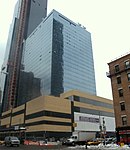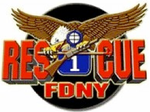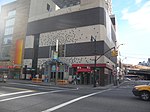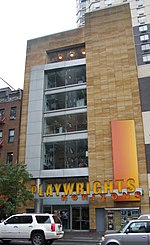10th Avenue station (IRT Flushing Line)
Hell's Kitchen, ManhattanHudson Yards, ManhattanIRT Flushing Line stationsProposed New York City Subway stations in ManhattanUse mdy dates from January 2017

10th Avenue is a proposed station, first planned as part of the 7 Subway Extension for the IRT Flushing Line (7 and <7> trains) of the New York City Subway. It would be located at 10th Avenue and 41st Street and have two tracks and two side platforms if built. Under the original 2007 plan, there would be one street-level entrance for each direction, and no crossovers or crossunders to allow free transfer between directions. The station was not built due to a lack of funding, but it could be completed if funding became available to build it. Various development proposals since 2009 have included completion of the station.
Excerpt from the Wikipedia article 10th Avenue station (IRT Flushing Line) (License: CC BY-SA 3.0, Authors, Images).10th Avenue station (IRT Flushing Line)
West 41st Street, New York Manhattan
Geographical coordinates (GPS) Address Nearby Places Show on map
Geographical coordinates (GPS)
| Latitude | Longitude |
|---|---|
| N 40.759 ° | E -73.996 ° |
Address
West 41st Street 500
10018 New York, Manhattan
New York, United States
Open on Google Maps






